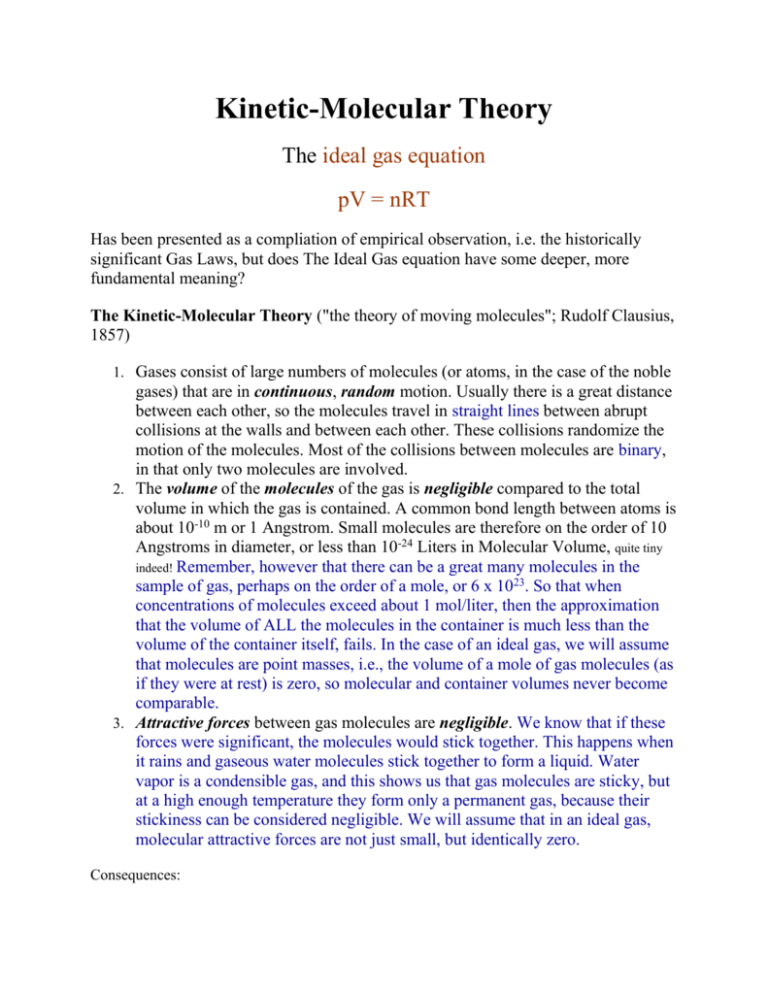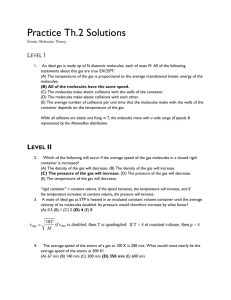Kinetic Molecular Theory Website 3
advertisement

Kinetic-Molecular Theory The ideal gas equation pV = nRT Has been presented as a compliation of empirical observation, i.e. the historically significant Gas Laws, but does The Ideal Gas equation have some deeper, more fundamental meaning? The Kinetic-Molecular Theory ("the theory of moving molecules"; Rudolf Clausius, 1857) 1. Gases consist of large numbers of molecules (or atoms, in the case of the noble gases) that are in continuous, random motion. Usually there is a great distance between each other, so the molecules travel in straight lines between abrupt collisions at the walls and between each other. These collisions randomize the motion of the molecules. Most of the collisions between molecules are binary, in that only two molecules are involved. 2. The volume of the molecules of the gas is negligible compared to the total volume in which the gas is contained. A common bond length between atoms is about 10-10 m or 1 Angstrom. Small molecules are therefore on the order of 10 Angstroms in diameter, or less than 10-24 Liters in Molecular Volume, quite tiny indeed! Remember, however that there can be a great many molecules in the sample of gas, perhaps on the order of a mole, or 6 x 1023. So that when concentrations of molecules exceed about 1 mol/liter, then the approximation that the volume of ALL the molecules in the container is much less than the volume of the container itself, fails. In the case of an ideal gas, we will assume that molecules are point masses, i.e., the volume of a mole of gas molecules (as if they were at rest) is zero, so molecular and container volumes never become comparable. 3. Attractive forces between gas molecules are negligible. We know that if these forces were significant, the molecules would stick together. This happens when it rains and gaseous water molecules stick together to form a liquid. Water vapor is a condensible gas, and this shows us that gas molecules are sticky, but at a high enough temperature they form only a permanent gas, because their stickiness can be considered negligible. We will assume that in an ideal gas, molecular attractive forces are not just small, but identically zero. Consequences: The average kinetic energy of the molecules does not change with time. The molecules bounce and bounce but, on average, do not slow down as long as the temperature of the gas remains constant. Energy can be transferred between molecules during collisions but not lost because the collisions are perfectly elastic (not sticky) The average kinetic energy of the molecules is proportional to absolute temperature (A result of Thermodynamics). At a given temperature the molecules of all species of gas, no matter what size shape or weight, have the same average kinetic energy.









